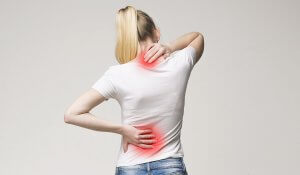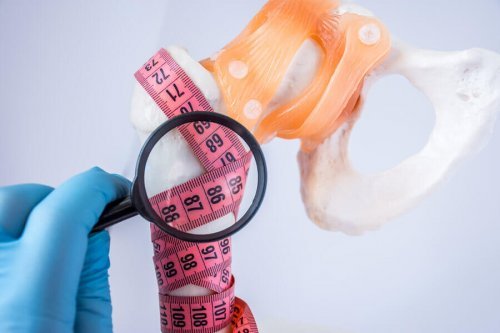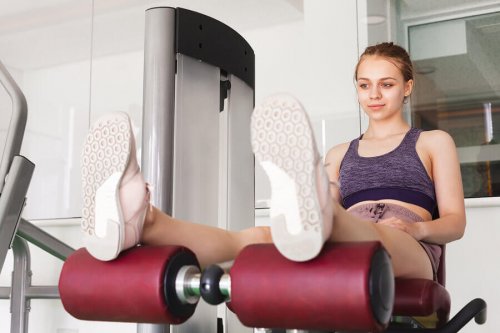Osteoporosis and Exercise

Being healthy is one of the common worries that people have, in general. In order to stay healthy, physical activity is vital. But something that you might not know is that exercising is the key to treat certain pathologies, such as osteoporosis.
What is osteoporosis?
Osteoporosis is a disease that reduces bone tissue density. Its main characteristic is that those who suffer from it, have less bone mass, which causes the bone tissues to weaken.
This results in weaker bones, that are more likely to break than the bones of people who don’t have osteoporosis. This disease can even cause bone fractures in areas as important for mobility as the hip or the spine.
Exercise and osteoporosis prevention
As with many other pathologies, physical activity can help improve osteoporosis symptoms. Exercise can stimulate bone tissues, which a sedentary lifestyle makes worse.
What does science say about it?
In a very important Sayegh study, she compares bone density between three different demographic groups: a sedentary group, a group of athletes, and finally, a group of people who go to the gym occasionally.
In all performed tests, the bone density was greater in the athlete’s group than in the other two. Furthermore, the bone density in the occasionally active group was mildly higher than that of the sedentary group.
Therefore, the study concludes that exercise plays a fundamental role when it comes to improving bone density, which can help prevent certain pathologies, such as osteoporosis.

Advantages of exercise for osteoporosis patients
Not only does an active lifestyle prevent and improve osteoporosis symptoms, it actually has many more benefits:
- Increase in muscle mass through strength exercises.
- Prevents and keeps risk factors under control.
- Improves postural hygiene and balance.
- Prevents bone mass reduction.
- Improves cardiovascular fitness levels.
- Increases functionality in day-to-day life.
- Last but not least, it substantially improves the quality of life.
Are there risks?
The main risk that comes with exercising if you have osteoporosis, is that high-intensity training can cause bone fractures. Therefore, it’s important that you find someone who creates a plan that specifically adapts to your needs.
What type of exercise should you do?
We’ve already mentioned the importance of physical activity in osteoporosis prevention. However, there are other aspects that you should pay attention to, besides your physical health. In fact, you should also try to follow a healthy diet, focusing on both calcium and Vitamin C. These are very important nutrients. Also, it’s highly recommended that you reduce your exposure to the sun and regularly go visit your doctor.
Furthermore, if you’re trying to begin an exercise routine, have in mind the following tips:
- Exercising at an early age prevents osteoporosis due to bone mineralization.

- Focus on balance and flexibility exercises.
- Practice high-impact sports. Swimming and such activities aren’t the most effective to improve osteoporosis symptoms because of their low impact.
- Strength training can be fundamental since it’ll promote an increase in muscle mass. Eccentric training is considered the best method for osteoporosis patients.
Conclusions
As you can see, physical activity plays a vital role both in the prevention and treatment of diseases as common as osteoporosis.
The selection of admissible and appropriate exercises for each individual, under the supervision of a sport sciences expert, is essential depending on the limitations and the severeness of the disease. It’s never too late to prevent osteoporosis, so what are you waiting for? Start exercising now!
Being healthy is one of the common worries that people have, in general. In order to stay healthy, physical activity is vital. But something that you might not know is that exercising is the key to treat certain pathologies, such as osteoporosis.
What is osteoporosis?
Osteoporosis is a disease that reduces bone tissue density. Its main characteristic is that those who suffer from it, have less bone mass, which causes the bone tissues to weaken.
This results in weaker bones, that are more likely to break than the bones of people who don’t have osteoporosis. This disease can even cause bone fractures in areas as important for mobility as the hip or the spine.
Exercise and osteoporosis prevention
As with many other pathologies, physical activity can help improve osteoporosis symptoms. Exercise can stimulate bone tissues, which a sedentary lifestyle makes worse.
What does science say about it?
In a very important Sayegh study, she compares bone density between three different demographic groups: a sedentary group, a group of athletes, and finally, a group of people who go to the gym occasionally.
In all performed tests, the bone density was greater in the athlete’s group than in the other two. Furthermore, the bone density in the occasionally active group was mildly higher than that of the sedentary group.
Therefore, the study concludes that exercise plays a fundamental role when it comes to improving bone density, which can help prevent certain pathologies, such as osteoporosis.

Advantages of exercise for osteoporosis patients
Not only does an active lifestyle prevent and improve osteoporosis symptoms, it actually has many more benefits:
- Increase in muscle mass through strength exercises.
- Prevents and keeps risk factors under control.
- Improves postural hygiene and balance.
- Prevents bone mass reduction.
- Improves cardiovascular fitness levels.
- Increases functionality in day-to-day life.
- Last but not least, it substantially improves the quality of life.
Are there risks?
The main risk that comes with exercising if you have osteoporosis, is that high-intensity training can cause bone fractures. Therefore, it’s important that you find someone who creates a plan that specifically adapts to your needs.
What type of exercise should you do?
We’ve already mentioned the importance of physical activity in osteoporosis prevention. However, there are other aspects that you should pay attention to, besides your physical health. In fact, you should also try to follow a healthy diet, focusing on both calcium and Vitamin C. These are very important nutrients. Also, it’s highly recommended that you reduce your exposure to the sun and regularly go visit your doctor.
Furthermore, if you’re trying to begin an exercise routine, have in mind the following tips:
- Exercising at an early age prevents osteoporosis due to bone mineralization.

- Focus on balance and flexibility exercises.
- Practice high-impact sports. Swimming and such activities aren’t the most effective to improve osteoporosis symptoms because of their low impact.
- Strength training can be fundamental since it’ll promote an increase in muscle mass. Eccentric training is considered the best method for osteoporosis patients.
Conclusions
As you can see, physical activity plays a vital role both in the prevention and treatment of diseases as common as osteoporosis.
The selection of admissible and appropriate exercises for each individual, under the supervision of a sport sciences expert, is essential depending on the limitations and the severeness of the disease. It’s never too late to prevent osteoporosis, so what are you waiting for? Start exercising now!
All cited sources were thoroughly reviewed by our team to ensure their quality, reliability, currency, and validity. The bibliography of this article was considered reliable and of academic or scientific accuracy.
- Hawkins, SA; Schroeder, ET; Wiswell, RA; Jaque, SV, Marcell, TJ; Costa, K. (1999). Eccentric muscle action increases site-specific osteogenic reponse. Medicine and Science in Sports and Exercise. 34: 1287-1292
- Sayegh, F. (2013). Bone Mineral Density and Body Composition of Adult Premenopausal Women with Three Levels of Physical Activity. Journal of osteoporosis, 2013.
This text is provided for informational purposes only and does not replace consultation with a professional. If in doubt, consult your specialist.








